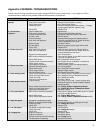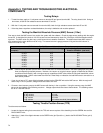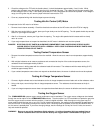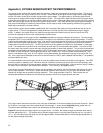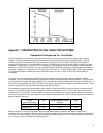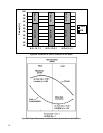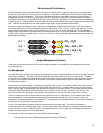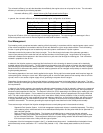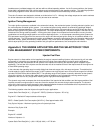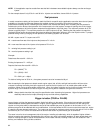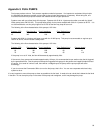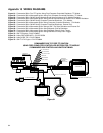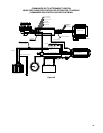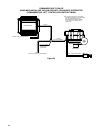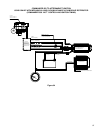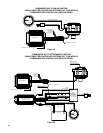81
(lambda sensor) oscillates between rich and lean within a defined operating window. As the O
2
sensor switches, the injector
pulse width is adjusted by the ECU until the lambda sensor switches again to the opposite condition. This switching operation
continuously supplies the ECU with the information needed to maintain a stoichiometrically correct combustion.
Three wire O
2
sensors are designed to indicate an air/fuel ratio of 14.7:1. Although the voltage output can be used to estimate
the air/fuel ratio above and below this, it can only be used as an estimate.
Ignition Timing Management
Two major ignition systems are available in the automotive industry: the mechanical system (including electronic ignition) and
the microcomputer controlled ignition system. In a mechanical system timing advance is achieved by centrifugal weights,
and a vacuum activated diaphragm. The centrifugal weights adjust ignition timing according to engine RPM and the vacuum
advance adjust ignition timing according to engine load. The major disadvantage of a mechanical system is that there is only
limited control of timing advance possible. A timing point that is proper for one speed and load condition is wrong for other
combinations of centrifugal weight position and vacuum diaphragm action. In microcomputer controlled ignition systems the
ECU processes several inputs from the sensors on the engine and then adjusts ignition timing for all conditions based on its
ignition data map. The ECU computes the ignition angle between consecutive spark pulses from the information about engine
load (MAP sensor), speed (RPM sensor), throttle position (TPS), knock sensor and temperature (air and coolant). Thus, it is
able to adjust quickly to every operating condition and give optimum performance, fuel consumption and emissions.
Appendix 8 THE ENGINE APPLICATION AND THE SELECTION OF YOUR
FUEL MANAGEMENT SYSTEM COMPONENTS.
Injector Fuel Flow
Engine output is in direct relation to fuel supplied to the engine, however installing injectors, which are too big, will not make
more power. It is therefore very important to match the fuel injector flow characteristics to specific engine applications.
Matching the fuel flow characteristics of fuel injectors is as important as matching the carburetor jets for a specific engine
application. The fuel flow of the injectors and the carburetor has to be matched to the air flow requirements of the engine over
a broad RPM operating range.
In the carburetor the operating range is usually divided into three sub-ranges: idle, mid-range and power. Three distinct fuel
circuits supply the fuel for these three ranges. In MPFI systems one single injector has to cover all three ranges for individual
cylinders from 500 RPM at idle to 8000 at WOT. The operating range of fuel injectors is normally referred to as the dynamic
range of the injector. An injector with a wide dynamic range is capable not only of potentially covering several engine
applications but also is a very sought after metering tool for high performance applications.
The dynamic range must encompass the minimal quantities of fuel required at idle conditions and the large quantities of fuel
required at maximum engine output. It must also cover the required fuel amounts during transient response. The dynamic
range of the fuel injector is further stressed in turbo charged applications because of the additional fuel required due to the
higher engine air mass flow rates generated by the turbocharger.
The following equation sizes fuel injectors for specific engine applications.
Injector Static Flow Rate [Ib./hr.] = (Engine HP * BSFC)/ (Number of injectors * DC of Inj.)
Engine HP = Realistic HP output estimate of the engine
BSFC = Brake Specific Fuel Consumption [Ib./HP*hr.]. Good approximation 0.50
Duty Cycle of Injector = Maximum opening time of injector/cycle time.
Maximum Duty Cycle= 0.90
Example:
Engine HP = 400HP
Number of Injectors = 8
Injector Static Flow Rate [Ib/hr] = (400 * 0.50)/(8 *0.90) = >27.78 lb/hr



